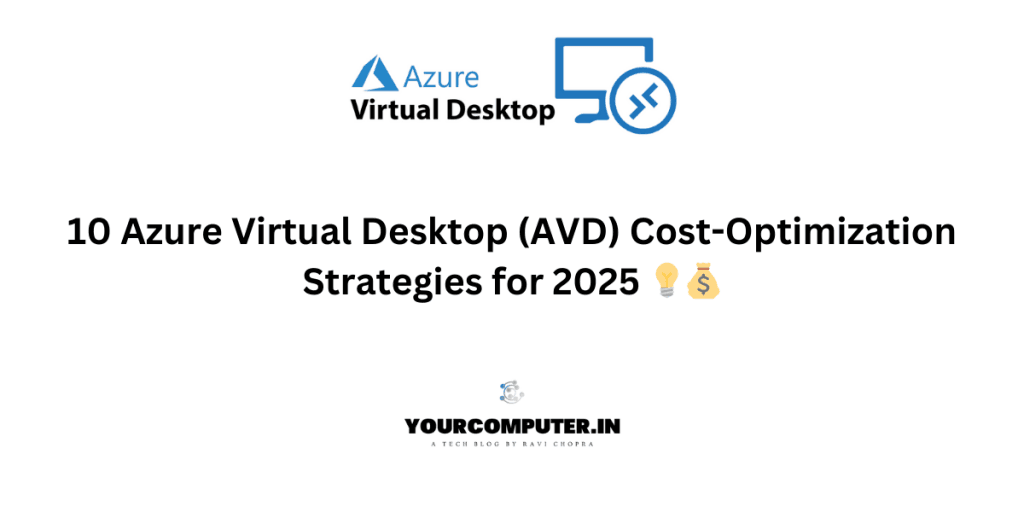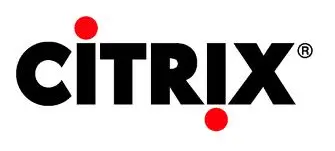Discover proven Azure Virtual Desktop (AVD) Cost-Optimization Strategies. Learn how to reduce expenses by 40-70% with smart optimization strategies and best practices.
Introduction
Azure Virtual Desktop (AVD) offers incredible flexibility, but managing costs can be challenging! In the fast-evolving cloud landscape of 2025, every organization seeks ways to maximize their cloud investment. Drawing from real-world experience, I’ll share ten battle-tested strategies that can dramatically reduce your AVD infrastructure expenses.
1. Reserved Instance Implementation
- Always go with reserved instance if you have a long term plan, as it will help you to get almost 40 to 70% discount.
- You can plan the ROI for Reserved Instance Investment by using Azure Calculator. It will show the difference, choose the Reservations under Saving Options:

2. Storage Security Cost Optimization
- Defender for Storage’s scanning can delay file access, which is critical for quickly mounting user profiles.
- Extra scanning increases IOPS and latency, potentially slowing down logon times.
- Make sure AVD session hosts are onboarded to MDE, the storage account doesn’t need to be scanned, reducing both performance overhead and cost. You may refer to this article
3. Strategic Storage Selection
- Evaluate standard SSD over premium SSD for production workloads
- Dont always set the benchmark of using premium SSD for production. Explore standard SSD as well not all production workloads requires high IOPS
- Asses your infra to make informed decisions based on performance needs

Also Read: Mastering Cloud Cost Optimization: 5 Best Practices for Azure, AWS & GCP
4. VM SKU Optimization
- Explore AMD VM SKUs as alternatives to Intel, usally if the series includes “a’ it belongs to AMD. like B2sv2 and B2as v2 both configuration is 2 vCPU 8 GB Memory. However, B2s belongs to Intel processor Intel Xeon Platinum 8473C (Sapphire Rapids) [x86-64]/Intel Xeon Platinum 8370C (Ice Lake) [x86-64] and B2as belongs to AMD AMD EPYC 7763v (Genoa) [x86-64]
- Test for performance and compatibility, as AMD is a cheaper alternate to Intel so if your compute load can work on AMD then it would be a cheaper option to save a cost. In B2s and B2as the cost difference is approx. $6 a month.
- Select cost-effective VM families, check further to identify right type of compute for your VM like D Series or B Series, if you have a less compute load then go with B series. you may check the Advisor in your subscription which will suggest you the right type of compute on the usage pattern of your existing VMs.
5. Temporary Disk Usage Strategy
- Choose VM SKUs without temp disks when possible, please check if there is a genuine requirement to use Temp like Page file or any other temp related data. If not, then choose a VM with Temp Disk, it will save the cost. There are many cases where Temp drive never been used but still attached to VM which has increased the cost of VM.
- For Example:- you can choose between b2sv2 and b2ms both have same cpu and memory but b2sv2 is without Temp storage where is b2ms with 16 GB Temp Storage.
6. Azure Advisor Implementation
- Leverage Azure Advisor for VM right-sizing
You may check the Advisor in your subscription under Cost Section, it will you show you the resource which are eligible to the potentian saving on cost:

7. Availability Zone DR Strategy
- Use Availability Zones instead of separate DR regions
- Enable active-active BCDR where appropriate
- Validate compliance with organizational BCM requirements
8. Dynamic Scaling Implementation
- Implement dynamic scaling for host pools
- Utilize on-demand VM spinning capabilities
- Optimize resource usage during peak and off-peak hours
9. VM SKU Policy Control
- Implement Azure Policy for VM SKU restrictions
- Navigate to the Azure portal, search for “Policy definitions”, select “Allowed virtual machine sizes SKUs”, and then specify the desired VM SKUs that should be allowed within the policy assignment, applying it to the desired scope (subscription or resource group) to enforce restrictions on VM size selection when deploying new virtual machines
- Prevent accidental deployment of expensive VMs
- Maintain cost control through governance
10. Budget and Storage Management
- Set up budget alerts for subscriptions
- Optimize ODFC share management
- Implement periodic cache flushing routines
Conclusion:
By implementing these ten specific cost-optimization strategies, you can significantly reduce your Azure Virtual Desktop expenses while maintaining optimal performance. Each strategy has been proven in real-world scenarios, offering a practical approach to cloud cost management. Remember, successful cost optimization is an ongoing process – regularly review and adjust these strategies based on your organization’s evolving needs.
- Why should you automate Active Directory cleanup? - 17 June 2025
- Troubleshooting: Unable to Add Instance Failover Group to Azure SQL Managed Instance - 4 March 2025
- 10 Azure Virtual Desktop (AVD) Cost-Optimization Strategies for 2025 💡💰 - 22 February 2025



